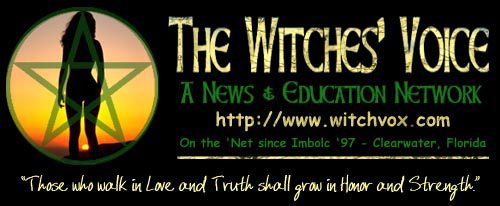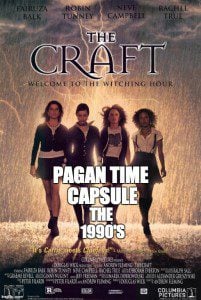 This year marks the 60th Anniversary of Public Paganism. Back in 1954 Gerald Gardner released the first book documenting a living, breathing, and long-lasting Witch tradition and kicked off the Pagan revival. Gifted with an introduction by Dr. Margaret Murray Witchcraft Today launched a now world-wide religious movement. I’m sure that Witches and other Pagans existed and practiced before Gardner, but Gardner made his (and by extension our) presence known in a big way. Modern Paganism would most likely have existed without Gardner but perhaps in a very different and/or diminished form.
This year marks the 60th Anniversary of Public Paganism. Back in 1954 Gerald Gardner released the first book documenting a living, breathing, and long-lasting Witch tradition and kicked off the Pagan revival. Gifted with an introduction by Dr. Margaret Murray Witchcraft Today launched a now world-wide religious movement. I’m sure that Witches and other Pagans existed and practiced before Gardner, but Gardner made his (and by extension our) presence known in a big way. Modern Paganism would most likely have existed without Gardner but perhaps in a very different and/or diminished form.
In celebration of sixty years and seven decades of Public Paganism I’ll be breaking down the essentials of Paganism decade by decade. I’ll take a look a the books, the music, and movies that have driven (and continue to drive) Modern Paganism. The items contained in many of our early Pagan Time Capsules will be a bit Witchcraft-Centric, but that will change as the decades move along. In each time capsule I’ll be placing five to six books, one or two movies, a few albums/songs, and one bonus item.
Once the 1990’s get rolling things get pretty personal for me, that was the decade I became a Pagan, and I’m way too close to the books and music of the era to write about it all objectively. I tried to write as a historian over the first four installments of this series, but I’m just too close to the 90’s to be able to do that here. So while you are reading all of this remember that a lot of it is directly filtered through my own experiences. All that being said I think the 1990’s were a huge decade in the development of Modern Paganism. We sort of went mainstream in the 90’s and we’ve never looked back . . . . .
Other editions of Pagan Time Capsule: The Fabulous Fifties, the Swinging Sixties, Shagging Seventies, Ecstatic Eighties, and The Nifty Nineties. The entire series is also summed up here in Pagan History on the Margins.
BOOKS
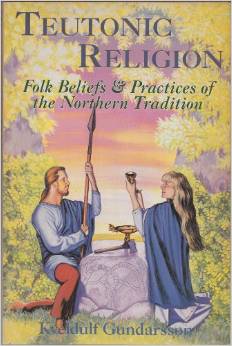 Much of Modern Paganism’s early history focuses almost exclusively on Modern Witchcraft. I know how aggravating that is for some and as a history buff myself I realize that the heavy focus on Witchcraft is rather dishonest. There have always been lots of Pagans outside of the sphere of Witchcraft and Wicca, but until the 1990’s there were few books available on those “other” traditions. As a young Pagan in the 90’s I was immediately attracted to Witchcraft (and that attraction has continued unabated since) but I also felt as if reading about traditions outside of Witchcraft was imperative. How could I possible be a good Pagan without knowing something about Druidry and the Norse traditions?
Much of Modern Paganism’s early history focuses almost exclusively on Modern Witchcraft. I know how aggravating that is for some and as a history buff myself I realize that the heavy focus on Witchcraft is rather dishonest. There have always been lots of Pagans outside of the sphere of Witchcraft and Wicca, but until the 1990’s there were few books available on those “other” traditions. As a young Pagan in the 90’s I was immediately attracted to Witchcraft (and that attraction has continued unabated since) but I also felt as if reading about traditions outside of Witchcraft was imperative. How could I possible be a good Pagan without knowing something about Druidry and the Norse traditions?
Speaking of Norse traditions, one of the earliest Teutonic “101” books was Kveldulf Gundarsson’s Teutonic Religion: Folk Beliefs & Practices of the Northern Tradition (1991). I have no idea if Gundarsson’s book is considered a classic in the genre, what’s important to me is simply its existence. Until the early 90’s everything seemed to only be about Witchcraft, even some of the books claiming to be “Norse” were simply re-worked versions of Wicca with a few “Hail Odins” tossed in for shits and giggles. Gundarsson’s book was of real interest to me not because I thought it was where I was headed, but because I wanted to learn more about the broad expanse of Paganism.
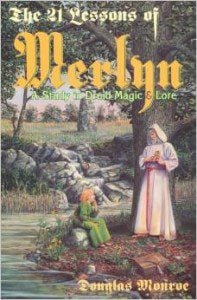 On the opposite spectrum but fascinating as a curio is Douglas Monroe’s The 21 Lessons of Merlyn: A Study in Druid and Magic Lore (1992). As a young Pagan I thought this was the book to read in order to understand Celtic Paganism, oh how wrong I was! I’m not sure “con job” is how I should describe this book, but the lessons shared by Merlyn are all from the mind of Monroe (with a nod to the movie Excalibur). As a work of very speculative spiritual fiction it’s fine for what it is, but Monroe tried so hard to pass it off as historical . . . . a few knowing winks would have been welcome. I’m adding Merlyn to my time capsule though because it’s rather representative of the 90’s. There was a lot of good and a lot of bad. Merlyn was the volume available at Barnes and Noble (it was the 90’s, the heyday of the book superstore) when maybe it should have been something from Phillip Carr-Gomm.
On the opposite spectrum but fascinating as a curio is Douglas Monroe’s The 21 Lessons of Merlyn: A Study in Druid and Magic Lore (1992). As a young Pagan I thought this was the book to read in order to understand Celtic Paganism, oh how wrong I was! I’m not sure “con job” is how I should describe this book, but the lessons shared by Merlyn are all from the mind of Monroe (with a nod to the movie Excalibur). As a work of very speculative spiritual fiction it’s fine for what it is, but Monroe tried so hard to pass it off as historical . . . . a few knowing winks would have been welcome. I’m adding Merlyn to my time capsule though because it’s rather representative of the 90’s. There was a lot of good and a lot of bad. Merlyn was the volume available at Barnes and Noble (it was the 90’s, the heyday of the book superstore) when maybe it should have been something from Phillip Carr-Gomm.
You know your religious movement is growing up when it has a book available for families raising “the next generation.” Such was Circle Round: Raising Children in Goddess Traditions by Starhawk, Anne Hill, and Diane Baker (1998). Circle Round is such a good book that even as a person without kids I still sometimes flip through it looking for inspiration and ritual ideas. I’ve always enjoyed Paganism’s little victories, I’ve always felt that this book was one of them.
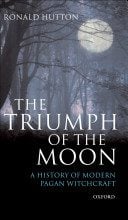 Speaking of triumphs, my favorite book of the 90’s remains Triumph of the Moon by Ronald Hutton (1999). Triumph changed the way we look at our history and helped establish “Pagan Studies” as a viable academic discipline. I know that there are some folks out there who don’t care for this book (and some, though not all, of their criticisms are valid) but this is one I still re-read all these years later. I literally skipped through my local B&N the first day I held this book in my hands (I worked there so I had it even before its official release date) and when I re-read it I sometimes do the same. To some extent Hutton helped us grow up. A mythological past is not a bad thing, but a past grounded in history is sometimes even more satisfying.
Speaking of triumphs, my favorite book of the 90’s remains Triumph of the Moon by Ronald Hutton (1999). Triumph changed the way we look at our history and helped establish “Pagan Studies” as a viable academic discipline. I know that there are some folks out there who don’t care for this book (and some, though not all, of their criticisms are valid) but this is one I still re-read all these years later. I literally skipped through my local B&N the first day I held this book in my hands (I worked there so I had it even before its official release date) and when I re-read it I sometimes do the same. To some extent Hutton helped us grow up. A mythological past is not a bad thing, but a past grounded in history is sometimes even more satisfying.
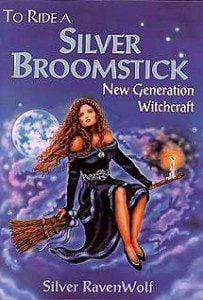 If I were to sum up the 1990’s in one book it would be To Ride a Silver Broomstick by Silver RavenWolf (1994). For a certain generation Broomstick is the book we grew up with and while some of us loathe it twenty years later the fact that so many of us Gen X folks have an opinion about it tells you all you need to know. I think a lot of the criticisms of Broomstick are overblown, and no matter what one thinks of RavenWolf her skills as a writer shouldn’t be called into question. For a generation of Witches (especially those who came to the Craft as young women) Broomstick pushed all the right buttons. Silver wrote about magic in a way that felt magical and not clinical and she made being a Witch look like the coolest, most interesting thing in the world. (I posted a very long look at Broomstick and Silver in May of last year, in many ways it’s a great companion piece to this article.)
If I were to sum up the 1990’s in one book it would be To Ride a Silver Broomstick by Silver RavenWolf (1994). For a certain generation Broomstick is the book we grew up with and while some of us loathe it twenty years later the fact that so many of us Gen X folks have an opinion about it tells you all you need to know. I think a lot of the criticisms of Broomstick are overblown, and no matter what one thinks of RavenWolf her skills as a writer shouldn’t be called into question. For a generation of Witches (especially those who came to the Craft as young women) Broomstick pushed all the right buttons. Silver wrote about magic in a way that felt magical and not clinical and she made being a Witch look like the coolest, most interesting thing in the world. (I posted a very long look at Broomstick and Silver in May of last year, in many ways it’s a great companion piece to this article.)
MOVIES
https://www.youtube.com/watch?v=oRxTe9APAJ0One of the things that made RavenWolf so popular in the 90’s was that her books seemed perfectly suited to pick up where the 1996 movie The Craft left off. It’s easy to simply dismiss The Craft as The Crap but it had its moments. The scene at the beach (located right above you on this page) with the calls to the Watchtowers was pretty spiffy and sounds like an actual Witch ritual. Sure it all goes downhill shortly thereafter but aren’t those few fleeting moments gorgeous? In 1996 I was mostly a solitary and while I had met some other Pagans I never really got to do ritual with them. The Craft was kind of a show and tell for how ritual might actually look if it was being done on a beach with four super-hot girls. (I’m sorry for the objectification, but I think that’s exactly how the producers of the movie wanted me to feel.) There was even a representative from Covenant of the Goddess consulting on The Craft (for all the good it did), but come on, it’s Hollywood! They weren’t making a documentary.
I remember getting a phone call in 1998 from a girlfriend imploring me to turn my TV over to PBS. Since it wasn’t during football season I complied and got swept up in Lord of the Dance at least until the show was interrupted by several twenty minute interludes asking me for money. Premiering in 1996 Lord of the Dance was a bigger louder version of 1994’s Riverdance (but with moving arms) and I though it was one of the coolest things I’d ever seen at the time. During the 1990’s “Celtic” was all the rage and if it was Irish or Welsh or Scottish it was Celtic right? And if it was Celtic it was probably linked to ancient paganisms? Again am I right? I’m not of course, but stuff like Lord of the Dance was how a lot of us imagined paganism might have looked one thousand years ago. The whole “things labeled Celtic=Paganism” equation is still here in 2014 too!
MUSIC
Picking out just a few albums from the 90’s is near impossible. There was a lot of mainstream music during the decade with Pagan overtones (Tori Amos, 311, Godsmack, and Julian Cope) and narrowing everything down to only a couple of selections presents a real challenge. I don’t think any artist has “scored” more of my rituals than Loreena McKennitt so she has to be my first choice here. Sure her first few records came out in the late 80’s, but she really found her musical footing (and a larger audience) on 1991’s The Visit. All of her 90’s era albums “feel Pagan” but it’s The Visit that was almost most explicitly so. All Soul’s Night, The Old Ways, Between the Shadows . . . . . those song-titles sound ready made to insert into your nearest Samhain Ritual. Lyrically and musically McKennitt has always drawn from a wide variety of sources (culturally and religiously) but most of her best music has always had a distinctly Pagan-Witch-lost-in-the-moonlight sort of vibe.
I was late to the Inkubus Sukkubus (and before 1995 spelled Incubus Succubus) party partly because the songs that everyone played for me were always the overly “gothy” ones. What makes Inkubus Sukkubus great are how they mix those goth influences with heavy metal, folk music, orchestrations, and overtly Pagan themes and lyrics. It’s probably easier to hear and find IS today than it was fifteen years ago, though that didn’t stop a whole lot of Pagans I know from listening to the band back in the 90’s. Wytches (1994) is an easy choice for the time capsule because of the title and because there’s a song to Pan on there (I’m a sucker for Pan songs). Until writing this article I had always believed that IS were signed to a major label, it’s rare for a mostly independent band to have the kind of following IS does.
I’ll always love me some Dar Williams and every Yuletide her song The Christians and the Pagans (from the album The Mortal City, 1996) finds itself on every Holiday Playlist I put together. As a song tCatP is cute, as a theological statement it’s pretty close to what I believe. Dar was also the most “mainstream” artist on the 2004 Serpentine release The Best of Pagan Song, which features The Christians and the Pagans of course.
BONUS
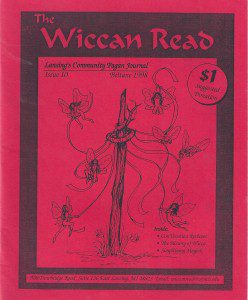 The 90’s were a pretty heady and pretty transitional time. Pagan magazines and Pagan ‘zines were at their height, and the very thing that made them so easy to put together eventually killed them too! Lansing Michigan’s The Wiccan Read (featuring 1998’s tenth issue) wasn’t the best Pagan ‘zine in the world but it was the best ‘zine in the Lansing Michigan area and featured my earliest forays into Pagan writing. Our Beltane issue had articles on Pagan history, The Necronomicon, a Horned God meditation, music reviews . . . . . maybe it’s not as bad as I remember (hats off to us Dwayne and Maggi!).
The 90’s were a pretty heady and pretty transitional time. Pagan magazines and Pagan ‘zines were at their height, and the very thing that made them so easy to put together eventually killed them too! Lansing Michigan’s The Wiccan Read (featuring 1998’s tenth issue) wasn’t the best Pagan ‘zine in the world but it was the best ‘zine in the Lansing Michigan area and featured my earliest forays into Pagan writing. Our Beltane issue had articles on Pagan history, The Necronomicon, a Horned God meditation, music reviews . . . . . maybe it’s not as bad as I remember (hats off to us Dwayne and Maggi!).
I ended up online because of Paganism. The first big group of Pagans I ran around with were all a part of Green Spiral at Michigan State University and staying in contact with them meant using Netscape and signing up for something called “email”. Back in those days (1995) checking that email meant visiting a university computer lab or a “cyber cafe” and nearly anything new on “the net” was “like totally the most awesome thing in the world.” One of those most awesome things in the world was The Witches Voice website circa February/March of 1997. I remember thinking “how Pagan can we make Michigan look!?!?” Witchvox made our little calendar in The Wiccan Read almost instantly obsolete. The internet changed everything. All of a sudden Pagans and Pagandom became a lot easier to find. It was the end of an era and the beginning of one too.
Do you like Raise the Horns? Even if you don’t how about humoring a harmless blond-haired guy? Like RtH on Facebook, and also like Patheos Pagan for more great articles most of them far better than this one. Are you a Pagan living in the UK? Jason will be in London and Edinburgh this September and October, send him a message if you’d like to get a cup of tea or a pint of cider.


